
Norma Aleandro is an Argentine actress. She is considered one of the most celebrated and prolific Argentine actresses of all time and is recognized as a cultural icon in her home country.

Libertad Lamarque Bouza was an Argentine and Mexican actress and singer, became one of the most iconic stars of the Golden Age of cinema in both Argentina and Mexico. She achieved fame throughout Latin America, and became known as "La Novia de América". By the time she died in 2000, she had appeared in 65 films and six telenovelas, had recorded over 800 songs and had made innumerable theatrical appearances.
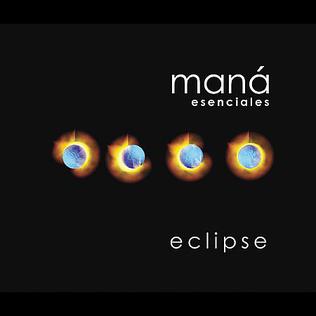
Esenciales: Eclipse is one of three CD set compilation albums set by Latin American Mexican rock band Maná. This compilation includes their greatest hits, combining songs from Sol and Luna and adding Eres Mi Religión which is not included in either Sol or Luna. Maná's Esenciales: Eclipse includes songs such as Vivir Sin Aire, Oye Mi Amor, Cómo Te Deseo, En El Muelle de San Blas and an unreleased song, Te Llevaré Al Cielo. It also includes a song they made with salsa music singer Rubén Blades, Sábanas Frías. There is also the music video for Eres Mi Religión that is included in the CD.
Sergio Kleiner, also credited as Sergio Klainer, is an Argentine-born Mexican film and television actor.

SOL S.A. Líneas Aéreas was an Argentine airline founded in 2005, and operating since August 2006 pursuant to an agreement between Transatlántica Group and the government of Santa Fe Province, who sought to improve air connections between the cities of Córdoba and Santa Fe. It had its headquarters in Rosario.

Cabezones is an Argentine hardcore-alternative rock band.
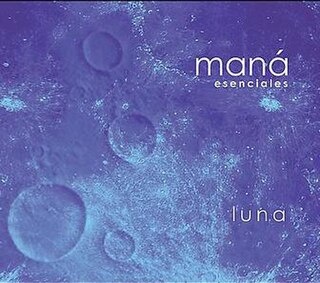
Esenciales: Luna is one of three CD compilation albums by Latin American Mexican rock band Maná. This album is a collection of their greatest hits along with Eclipse and Sol. Maná's Esenciales: Luna includes an unreleased song, Te Llevaré Al Cielo, and a bonus track "Celoso" from the movie soundtrack album "My Family ". Their music videos for the songs En el Muelle de San Blas and Vivir Sin Aire (live) are included in the CD.

Esenciales: Sol is a CD compilation album by the Latin American Mexican rock band Maná. It is one of three greatest hits compilation albums, along with Esenciales: Eclipse and Esenciales: Luna, with remastered versions of all their best-known songs. Esenciales: Sol includes a previously unreleased song, "Te Llevaré Al Cielo", and a bonus track, "Tonto En La Lluvia'", a song by Led Zeppelin from their In Through the Out Door album. The album also includes two music videos.
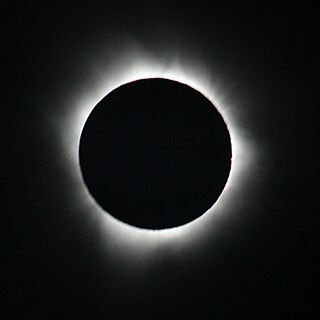
A total solar eclipse occurred at the Moon's descending node of orbit between Sunday, July 11 and Monday, July 12, 2010, with a magnitude of 1.058. A solar eclipse occurs when the Moon passes between Earth and the Sun, thereby totally or partly obscuring the image of the Sun for a viewer on Earth. A total solar eclipse occurs when the Moon's apparent diameter is larger than the Sun's, blocking all direct sunlight, turning day into darkness. Totality occurs in a narrow path across Earth's surface, with the partial solar eclipse visible over a surrounding region thousands of kilometres wide. Occurring about 1.6 days before perigee, the Moon's apparent diameter was larger.

Presidente Perón International Airport is an airport in Neuquén Province, Argentina, serving the cities of Neuquén, Cipolletti, Plottier, Centenario, and General Roca. The airport is on the west side of Neuquén, a city at the confluence of the Limay and Neuquén Rivers.

A total solar eclipse occurred at the Moon's ascending node of orbit on Tuesday, July 2, 2019, with a magnitude of 1.0459. A total solar eclipse occurs when the Moon's apparent diameter is larger than the Sun's and the apparent path of the Sun and Moon intersect, blocking all direct sunlight and turning daylight into darkness; the Sun appears to be black with a halo around it. Totality occurs in a narrow path across Earth's surface, with the partial solar eclipse visible over a surrounding region thousands of kilometres wide. Occurring about 2.4 days before perigee, the Moon's apparent diameter was larger.
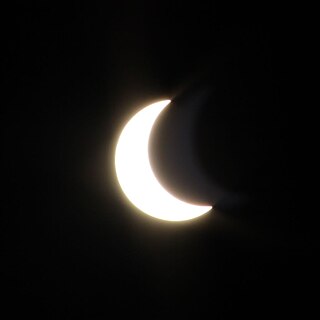
An annular solar eclipse occurred at the Moon's descending node of orbit on Sunday, February 26, 2017, with a magnitude of 0.9922. A solar eclipse occurs when the Moon passes between Earth and the Sun, thereby totally or partly obscuring the image of the Sun for a viewer on Earth. An annular solar eclipse occurs when the Moon's apparent diameter is smaller than the Sun's, blocking most of the Sun's light and causing the Sun to look like an annulus (ring). An annular eclipse appears as a partial eclipse over a region of the Earth thousands of kilometres wide. Occurring about 4.9 days before perigee, the Moon's apparent diameter was larger.

A total solar eclipse occurred at the Moon’s descending node of orbit on Monday, December 14, 2020, with a magnitude of 1.0254. A total solar eclipse occurs when the Moon's apparent diameter is larger than the Sun's and the apparent path of the Sun and Moon intersect, blocking all direct sunlight and turning daylight into darkness; the Sun appears to be black with a halo around it. Totality occurs in a narrow path across Earth's surface, with the partial solar eclipse visible over a surrounding region thousands of kilometres wide. Occurring about 1.8 days after perigee, the Moon's apparent diameter was larger.
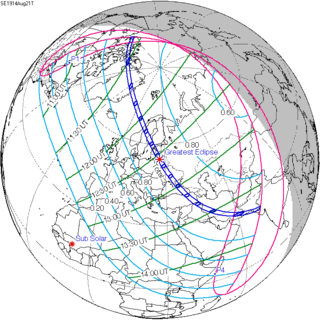
A total solar eclipse occurred at the Moon's descending node of orbit on Friday, August 21, 1914, with a magnitude of 1.0328. A solar eclipse occurs when the Moon passes between Earth and the Sun, thereby totally or partly obscuring the image of the Sun for a viewer on Earth. A total solar eclipse occurs when the Moon's apparent diameter is larger than the Sun's, blocking all direct sunlight, turning day into darkness. Totality occurs in a narrow path across Earth's surface, with the partial solar eclipse visible over a surrounding region thousands of kilometres wide. Occurring about 2.7 days before perigee, the Moon's apparent diameter was larger.

Sol Líneas Aéreas Flight 5428 was a passenger flight which crashed near Los Menucos, Argentina, on 18 May 2011, killing all 22 people on board. The aircraft involved, a Saab 340, was operating Sol Líneas Aéreas' scheduled domestic service from Neuquén to Comodoro Rivadavia.
Benita Puértolas was an Argentine film and theatre actress. She was the mother of the film actor Héctor Coire.
Ralph Pappier was an Argentine production designer, set decorator and film director.

Celia Geraldy was an Argentine vedette actress in film and theater. She was a femme fatale at the beginning of Argentina's golden decade of cinema.

The Golfo San Jorge Basin is a hydrocarbon-rich sedimentary basin located in eastern Patagonia, Argentina. The basin covers the entire San Jorge Gulf and an inland area west of it, having one half located in Santa Cruz Province and the other in Chubut Province. The northern boundary of the basin is the North Patagonian Massif while the Deseado Massif forms the southern boundary of the basin. The basin has largely developed under condition of extensional tectonics, including rifting.
The 2016–17 Copa Argentina was the eighth edition of the Copa Argentina, and the sixth since the relaunch of the tournament in 2011. The competition began on February 2 and ended on December 9, 2017.














